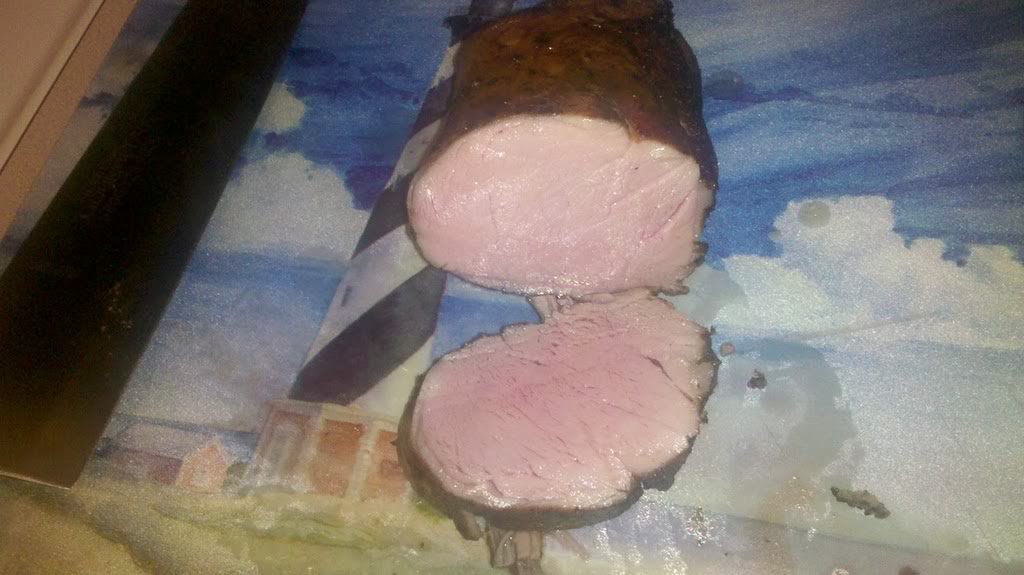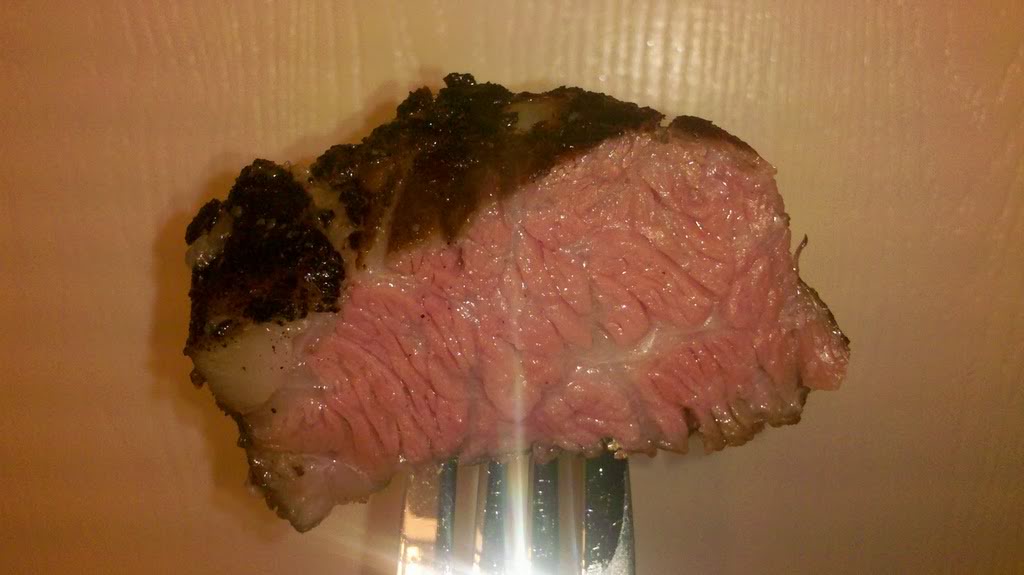
Justin Uy
-
Posts
32 -
Joined
-
Last visited
Content Type
Profiles
Forums
Store
Help Articles
Posts posted by Justin Uy
-
-
Not exactly a haute cuisine question here, but a co-worker just posed an interesting question.
A different co-worker's child is selling those buckets of cookie dough as a fundraiser. The dough apparently contains raw eggs, so as much as the first coworker would like to just dig into a bucket of raw cookie dough, food poisoning is a concern for him.
He knows a little about sous vide, and that I've been dabbling lately, so he posed an interesting question to me just now. Would it be possible to seal the tub and drop it in the water bath to pasteurize? I know a raw egg can pasteurize at 57C in about 2 hours. Do you think it would be possible to do the same with dough without affecting the texture?
-
Justin,
for how long did you marinate?
I went with 8 hours in the brine, then coated lightly with the dijon, bagged, vac'd and in the fridge for 24 hours. Dropped the bag directly in the bath from there.
Maybe a liquid marinade next time?
-
Determining thermal time constants of temperature sensors can be done by changing ambient temperature from e.g. 55oC (PID-controlled water bath) to 0oC (ice water stirred with a milk frother).
The thermal time constant (tau) is the time to change by 63.2% (T) of the temperature difference:
T = 0.632 * T2 + 0.368 * T1 (20.24oC in the above example)
So just note starting time at 55oC and look for the time when 20.24oC is reached, the difference is your thermal time constant.
Inappropriate relation of thermal time constant and cycle time of the PID-controller may lead to aliasing.
Looking forward to your results (they may be counter-intuitive).
Thanks PedroG! I'll definitely give that a try. The science of cooking and control systems have always been major interests for me. I'm probably going to give that a try over the weekend when I get some free time.
I actually re-ran my autotune, and it seems to be holding with much more stability. The P value held constant, but the I and D about doubled compared to the waterproofed probe.
In the meantime, here's my latest SV attempt. A pork tenderloin brined in a 6% salt solution, coated with Dijon, SV for 2.5 hrs at 60C and seared off.

The pork was perfectly tender and juicy, but unfortunately I could barely taste the mustard after the sear, and while the brine salted it to my taste, not a lot of other flavor penetrated down into the meat. Any advice on how to treat this cut? From what I've been reading it seems like a lot of people have trouble bringing good flavor to pork tenderloin.
-
Good evening all.
I had a quick question for those of us with DIY sous vide setups (or anyone with any particular expertise).
I just got this probe in the mail today:
http://www.virtualvillage.com/thermocouple-temperature-probe-pt100-003820-034.html
to replace this one:
mostly due to the higher operating temperature, and the 2 meter probe is somewhat unwieldy.
I installed the new probe and started up my setup (a PID controlled bucket heater with a 79 gph pump in a 9 quart polycarb food pan) and I noticed that the temperature seems a lot less stable than the other probe.
With the waterproof probe, the temperature would hold pretty steadily at, say, 55C, and every other minute or so it might drop to 54.9 for a moment before settling again. The new probe seems to vary every 10 seconds or so, but pretty much always within +/- .2C of the setpoint. I've heard some people complaining of temperature stability problems with the steel shielded probes and having to connect one of the lead wires to the sheath, but I haven't seen any clarification of how big the "instability" is, so I'm not sure if mine is behaving unusually or if the temperature response is more sensitive because the metal is in direct contact with the water as opposed to being in the waterproof plastic.
Any thoughts?
-
So I'm sure you guys have seen endless pictures like this, and I've got no talent for food photography. But here's the first result of my first foray into sous vide for more than 8 hours...

Slice of beef short rib, dry rubbed with hot paprika, onion powder, kosher salt and white pepper. Sous vide at 56.6 Celcius for 72 hours.
Good lord I've had prime rib and filet less tender than this.
-
Good evening all,
I've just recently started cooking SV, and I had a quick food safety question.
I just dropped a few short ribs into my setup, and after about an hour and a half, I noticed that two of the bags were leaking at the vacuum "port" (I'm currently using the Ziploc vacuum system).
I pulled those pieces and rebagged them, but that got me to thinking. What are the food safety implications of having a small leak in a bag? And is there any problem with me taking out the protein and rebagging it?
Thanks much

Sous Vide: Recipes, Techniques & Equipment, 2011
in Cooking
Posted
Thanks for all the responses! That was quick.
It was more of a technical challenge/wondering type of question. I doubt he'll be asking me to pasteurize a bunch of eggs for him to make his own "safe for eating" cookie dough, but definitely good to know.